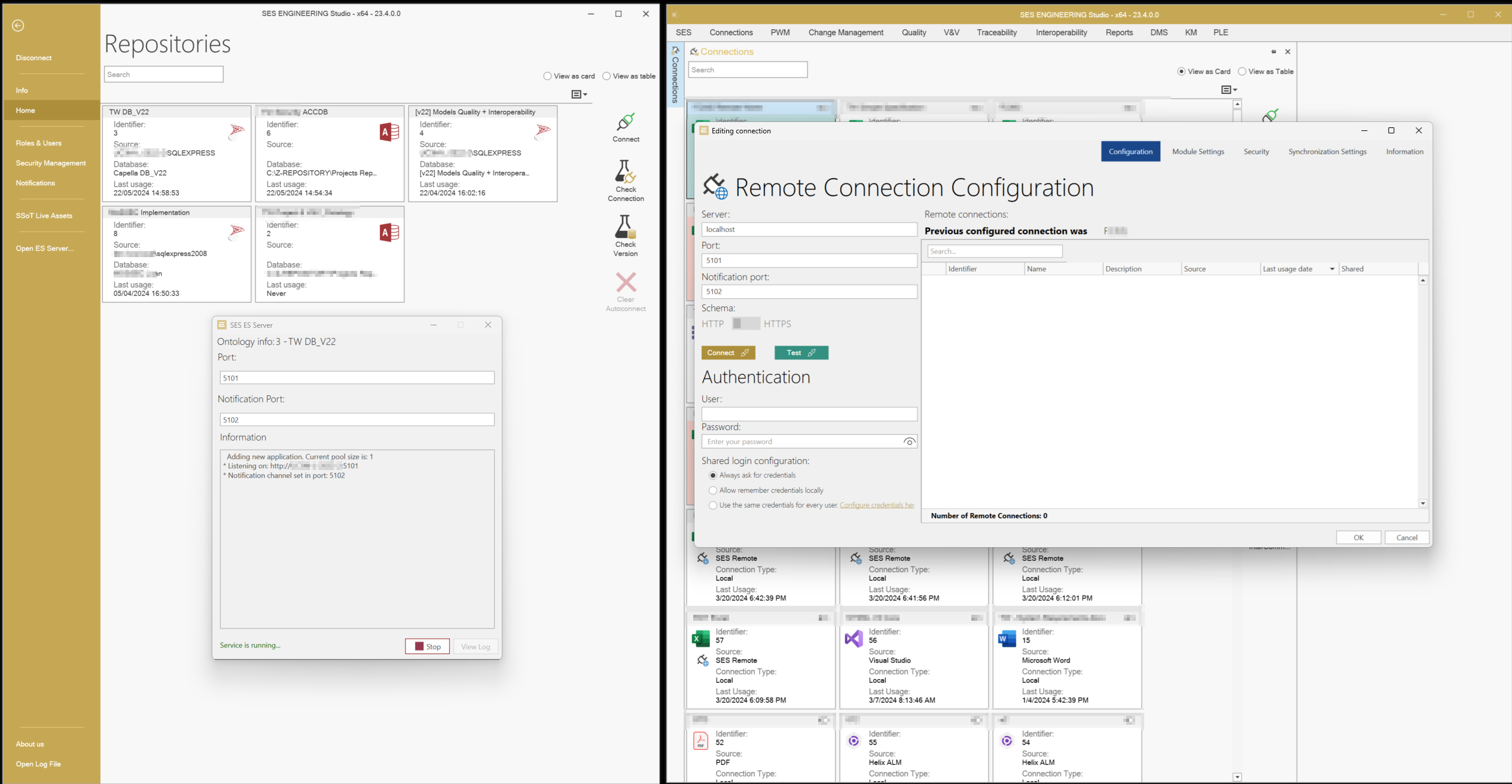Interoperability HUB - connect your tools and make them interoperate
A SMARTer way to enable your Digital Thread
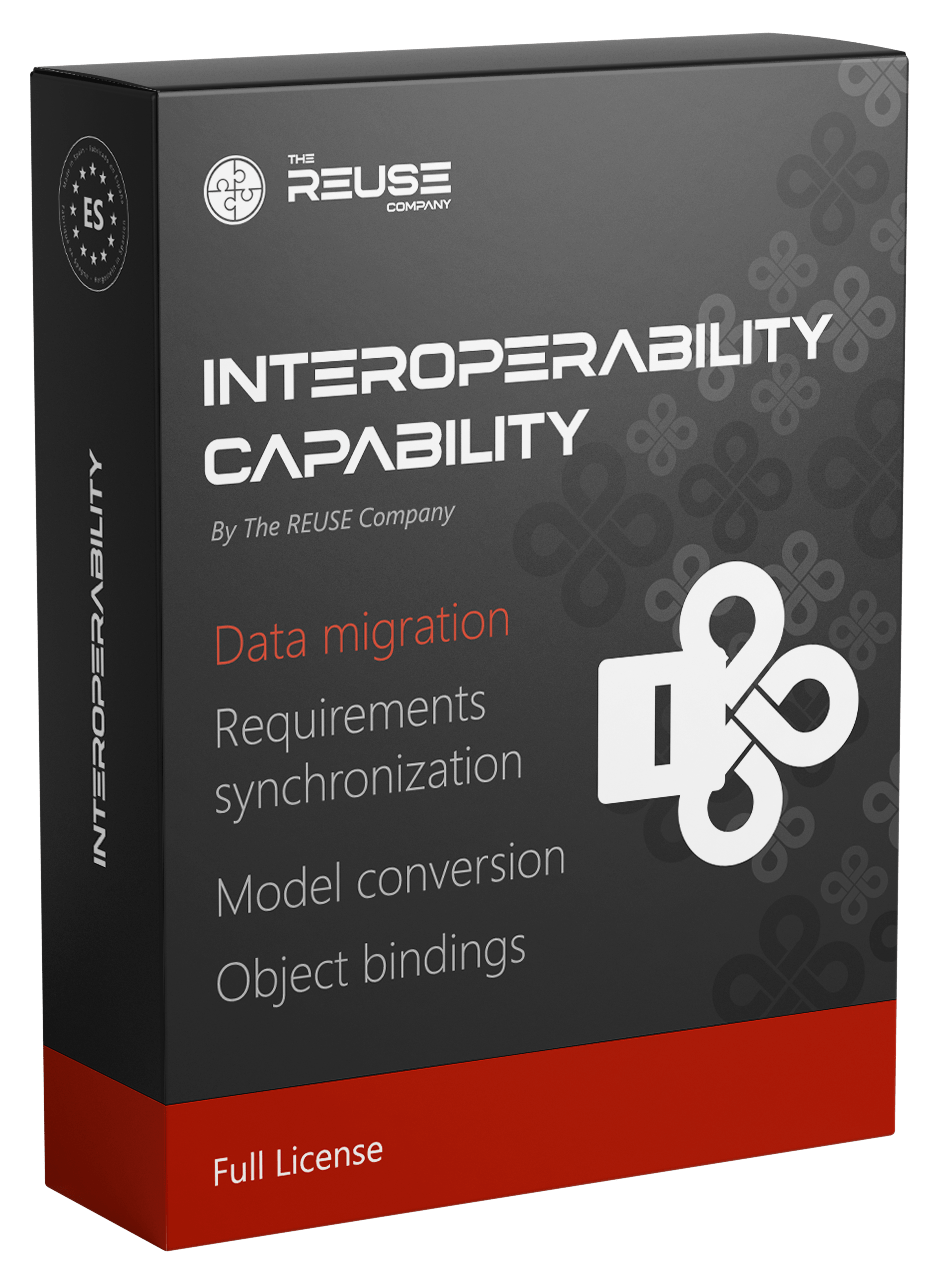
Interoperability between systems engineering tools
Most safety-critical system projects involve a large ecosystem of tools, file formats, modeling languages, and other diverse aspects. They pose the challenge of integrating all assets to maintain the digital thread and ensure traceability across the system lifecycle.
This becomes even more challenging when considering complex organizations and their interactions with third-party entities, such as partners, customers, or suppliers.
SES ENGINEERING Studio, powered by its wide connectivity workbench of over 50 connectors, offers an Interoperability HUB that establishes a Synchronized Source of Truth (SSoT). This approach connects with silos while maintaining each source of truth.
The Interoperability Capability included in the SES ENGINEERING Studio is based on a clear set of pillars.
Connectivity to the sources of engineering information is, of course, the core one. Once connections are assured, different ways to transform the information from one environment to another are possible: Information Synchronization, Merging, Addition, etc. Semantic transformation of information allows solving real and difficult problems (NAF models into UML models, SysML V2 models into textual requirements, Capella (Arcadia) models into UAF models, etc.).
Finally, the Interoperability HUB allows real-time connectivity between IT environments and tools in different organizations.
The Power of Connectivity
Systems engineering is a complex and demanding field that coordinates the activities of many professionals from diverse disciplines. It relies on various file formats and tools, often from multiple vendors, and is not always designed for seamless connectivity.
The Interoperability Hub of the SES ENGINEERING Studio aims to address this need. It enables a complete digital thread through the connectivity to over 50 widely used tools. It also offers the traceability required by many regulatory frames and enables multiple possibilities to exchange information between the involved tools. The tools are typically used by different entities (partners, customers, providers, regulatory bodies). This might require the synchronization and transformation of documents and models between different tools. It could also require concurrent access to the same repository, even from external IT infrastructures.
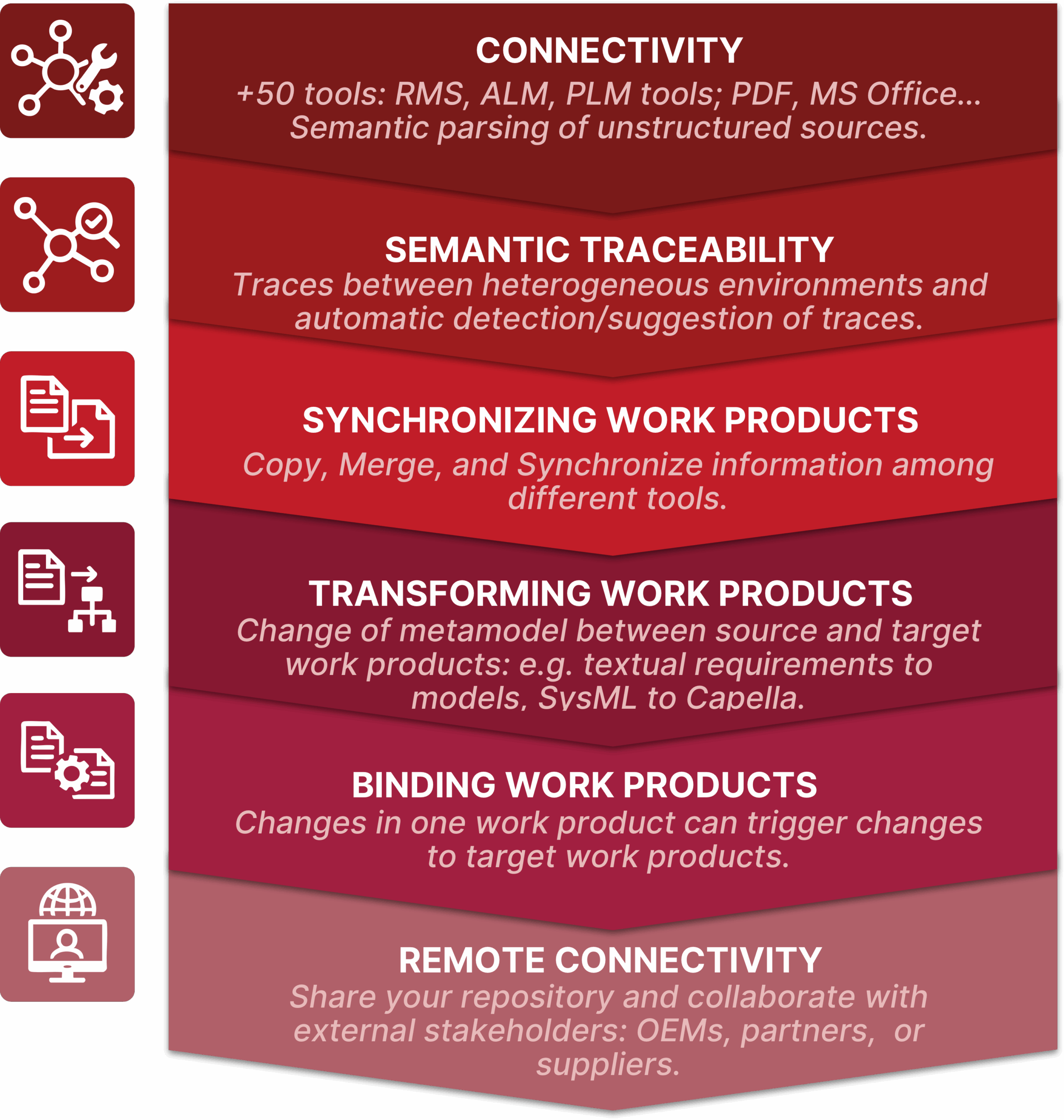
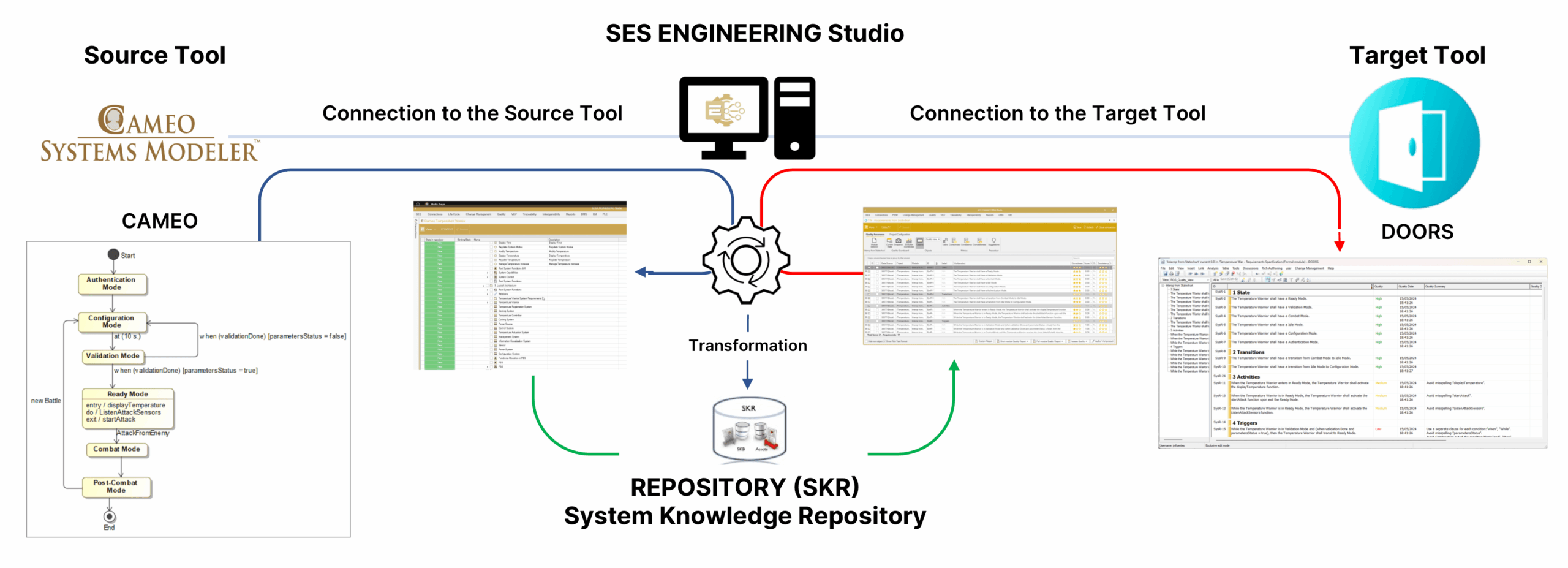
Connectivity and Semantic Traceability
The first pillar of the Interoperability Hub corresponds to SES ENGINEERING Studio’s ability to connect to more than 50 different tools. These include requirements management tools, MBSE tools, ALM, PLM, MS Office, PDF, etc. The Hub avoids point-to-point connectivity by providing a canonical representation of the sources and maintaining a synchronized source of truth (SSoT).
Starting here, SES ENGINEERING Studio implements a complete traceability module, offering semantic methods and artificial intelligence to suggest new traces. This makes the required but demanding traceability activities easier.
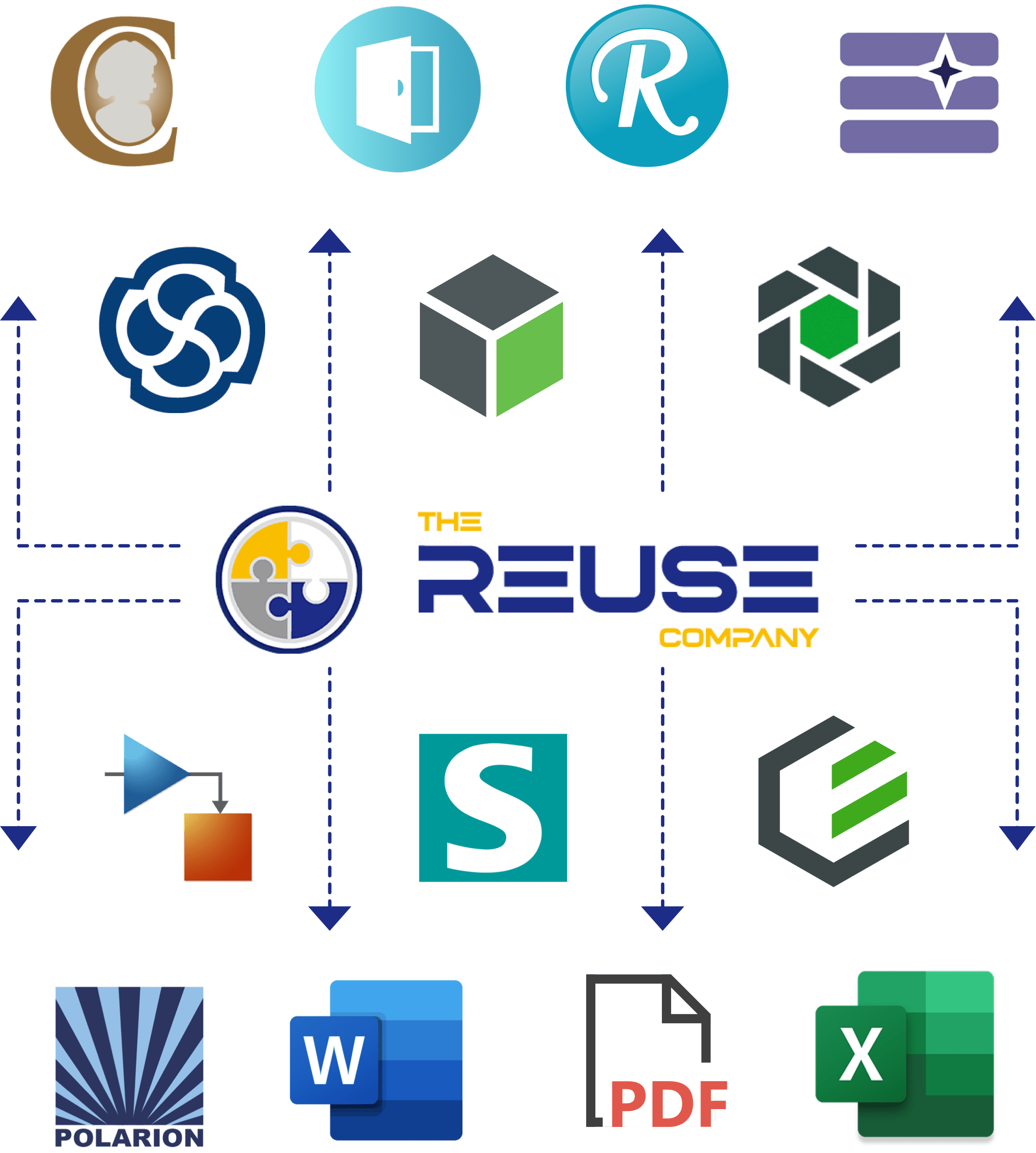
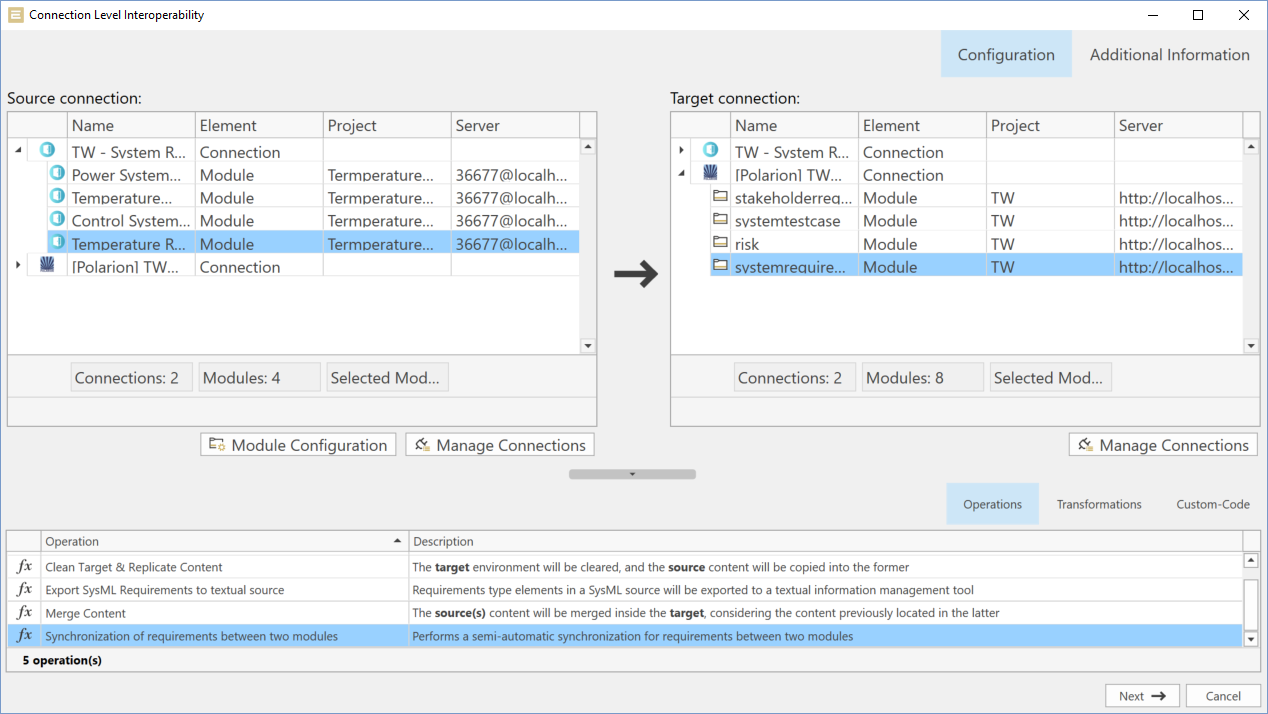
Copy, Merge, and Synchronize Content
When you select two source connections to compatible tool platforms, the Interoperability Hub facilitates data migration between the heterogeneous tools. It can also recommend operations for synchronizing each pair of objects between the two chosen sources.
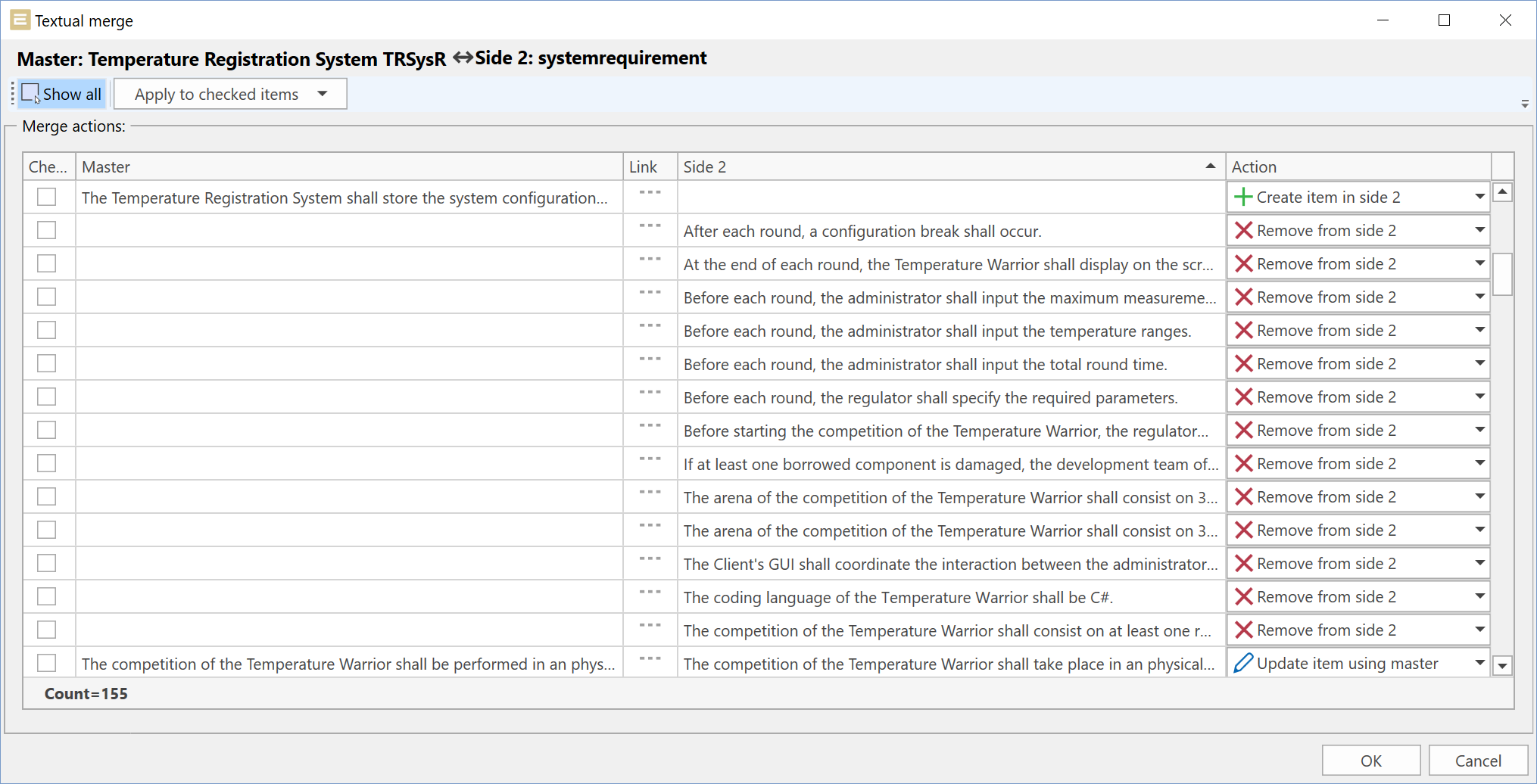
This way, changes occurring in either of the paired connections will be synchronized throughout the project.
The mapping between source and target is fully customizable. In addition to the items, one or more attributes in the source can be merged or synchronized with the target. The Hub also allows for the filtering of synchronized elements using attributes, types of objects, stereotypes, location within a specific package, or even the presence in a specific diagram.
Data Conversion and Transformation
The next pillar corresponds to transforming metamodels during synchronization. Using a semantic engine, the transformation from Cameo or another SysML-based tool to Capella is now seamless.
The same for other even more demanding transformations such as the generation of requirements from models and vice versa, the generation of test cases from textual requirements, etc.

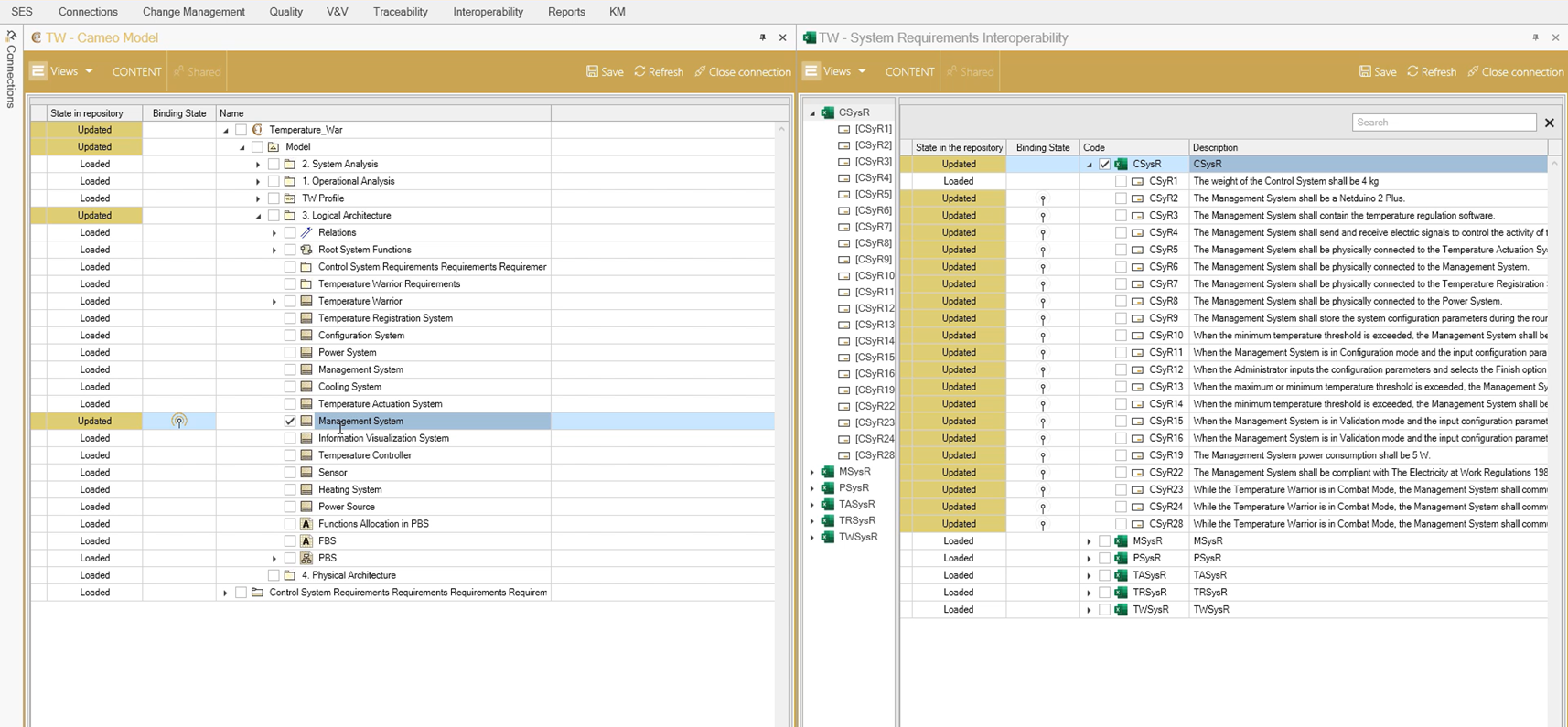
Object Binding
Once a synchronization process has been executed, the Hub takes care of changes on one or the other side to trigger suspicious links. It also enables the binding feature in the link; thus, changes can be automatically propagated from one element to the other.
If a requirement in an RM tool is linked to a model element in an MBSE tool, changes to the element’s name may trigger updates. After confirmation, these changes would affect all requirements referencing the element.
Remote Connectivity
The final block of the interoperability pillars corresponds to the ability to connect SES ENGINEERING Studio, to a data source that is not a local asset. It can also be managed in a different environment (server).
This mechanism allows e.g. a connection from a customer’s infrastructure to the repositories where the provider is developing a document or a model. There are many possibilities for determining the level of access to this remote connectivity. One of them is to access in read-only mode. However, the smart synchronization mechanisms implemented by the SES ENGINEERING Studio also allow working collaboratively from different environments.
